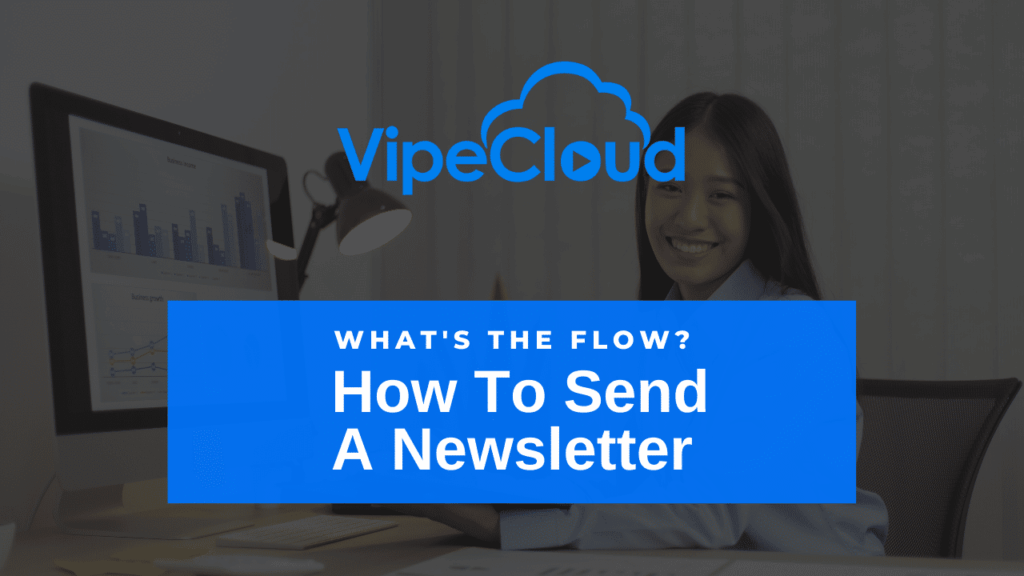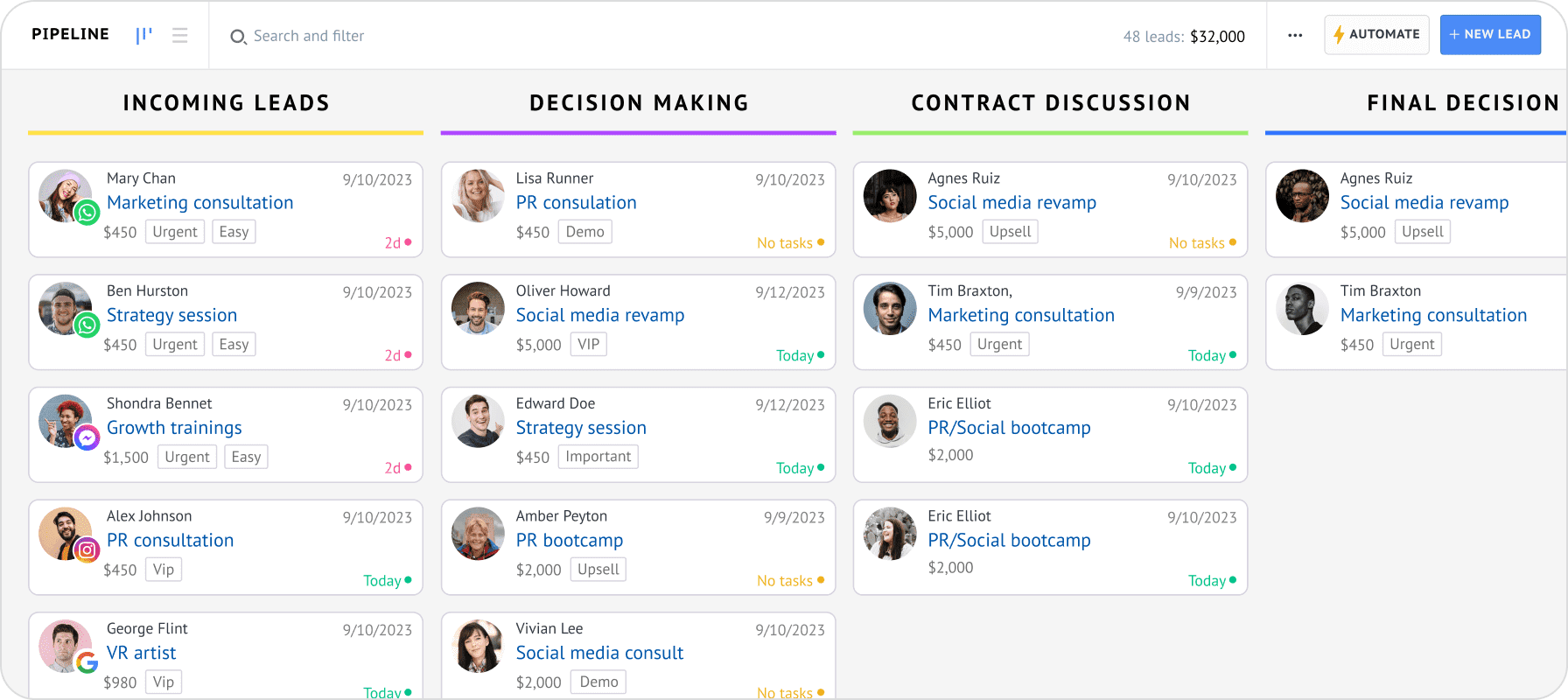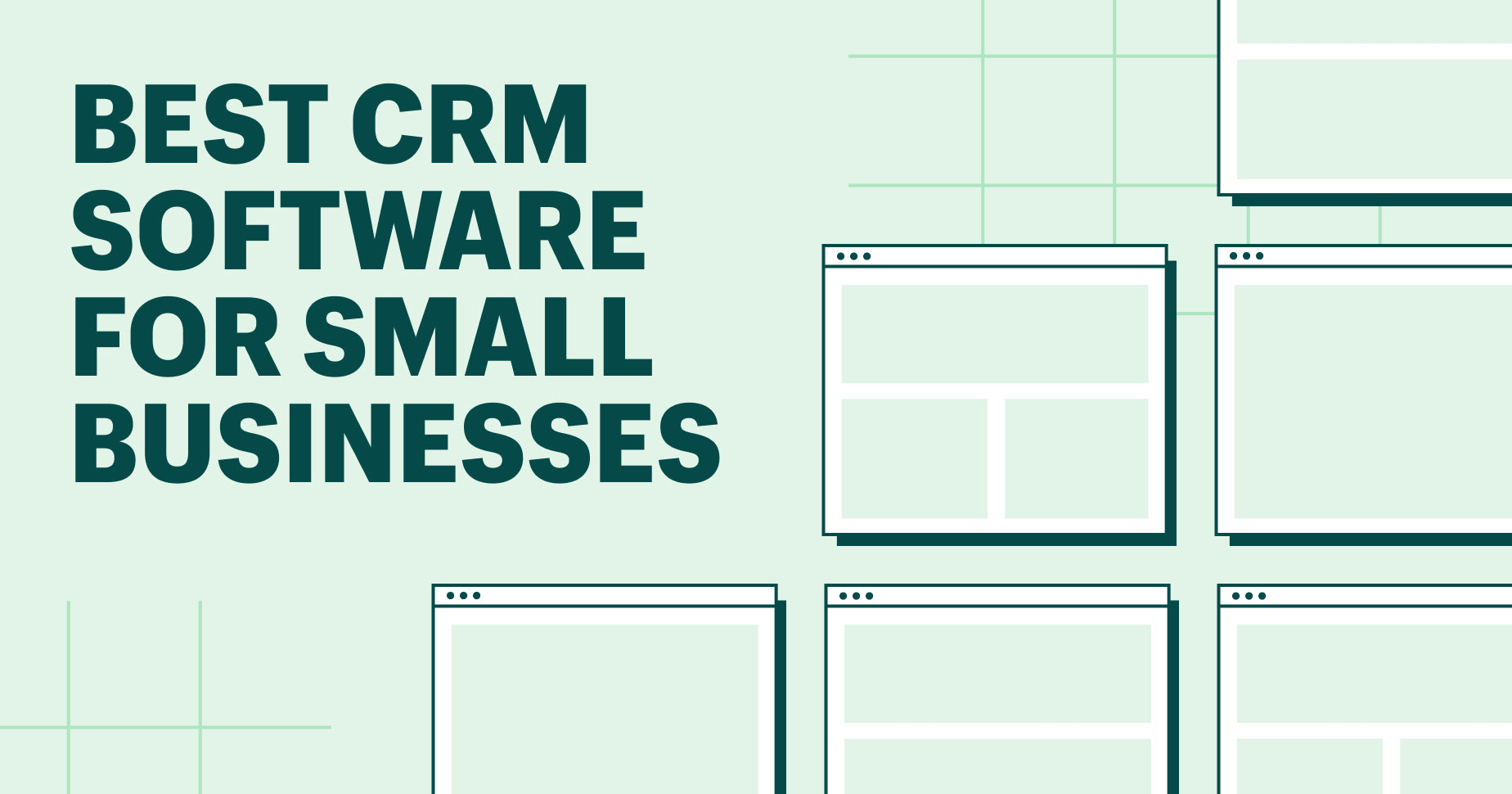Unlock Customer Loyalty: A Comprehensive Guide to CRM Marketing Newsletters

Unlock Customer Loyalty: A Comprehensive Guide to CRM Marketing Newsletters
In the ever-evolving landscape of digital marketing, staying connected with your audience is paramount. One of the most effective tools for nurturing customer relationships and driving engagement is the humble yet powerful CRM marketing newsletter. This comprehensive guide will delve into the intricacies of crafting compelling newsletters, leveraging customer relationship management (CRM) data, and ultimately, fostering lasting loyalty.
What is a CRM Marketing Newsletter?
At its core, a CRM marketing newsletter is a communication sent directly to your subscribers’ inboxes, fueled by data gleaned from your Customer Relationship Management (CRM) system. This data allows for hyper-personalization, ensuring each recipient receives content relevant to their interests, behaviors, and purchase history. Unlike generic email blasts, CRM newsletters are meticulously tailored, leading to higher open rates, click-through rates, and conversions.
The Power of Personalization: Why CRM Newsletters Excel
Generic newsletters often fall flat, struggling to capture and maintain audience attention. CRM newsletters, however, are built on the foundation of personalization. This means:
- Targeted Content: Newsletters can be segmented based on demographics, purchase history, website activity, and more.
- Relevant Offers: Promotions and product recommendations are tailored to individual customer needs and preferences.
- Personalized Greetings: Address subscribers by name, creating a sense of connection.
- Behavior-Based Triggers: Automated emails can be sent based on specific actions, such as abandoned carts or product views.
This level of personalization leads to a more engaging and rewarding experience for subscribers, fostering a stronger connection with your brand.
Building Blocks of a Successful CRM Marketing Newsletter
Creating a successful CRM marketing newsletter involves careful planning and execution. Here are the essential components:
1. Define Your Goals
Before you start writing, clearly define your objectives. What do you want to achieve with your newsletter? Common goals include:
- Increasing Sales: Promote products, services, or special offers.
- Driving Website Traffic: Direct subscribers to your website for more information.
- Building Brand Awareness: Share valuable content and establish thought leadership.
- Nurturing Leads: Guide potential customers through the sales funnel.
- Improving Customer Retention: Keep customers engaged and encourage repeat purchases.
Having clear goals will guide your content strategy and help you measure the success of your newsletter.
2. Understand Your Audience
Knowing your audience is crucial for creating relevant and engaging content. Leverage your CRM data to understand:
- Demographics: Age, location, gender, and other demographic information.
- Purchase History: Products purchased, frequency of purchases, and average order value.
- Website Activity: Pages visited, products viewed, and time spent on your website.
- Engagement Levels: Open rates, click-through rates, and other metrics that indicate subscriber interest.
This understanding will inform your content, segmentation, and personalization efforts.
3. Segment Your Audience
Segmentation involves dividing your audience into smaller groups based on shared characteristics. This allows you to tailor your content to specific interests and needs. Common segmentation strategies include:
- Demographic Segmentation: Grouping subscribers based on age, location, or other demographic factors.
- Behavioral Segmentation: Grouping subscribers based on their actions, such as past purchases, website activity, or email engagement.
- RFM Segmentation (Recency, Frequency, Monetary Value): Grouping subscribers based on their recent purchases, purchase frequency, and total spending.
- Lifecycle Stage Segmentation: Grouping subscribers based on their stage in the customer journey, such as lead, prospect, or customer.
Effective segmentation ensures that your newsletter content is highly relevant to each recipient.
4. Choose the Right CRM Platform
The right CRM platform is essential for managing your customer data and automating your email marketing efforts. Consider the following factors when choosing a platform:
- Integration Capabilities: Ensure the platform integrates seamlessly with your existing systems, such as your website, e-commerce platform, and other marketing tools.
- Segmentation Features: Look for robust segmentation capabilities that allow you to create highly targeted campaigns.
- Automation Features: Automate email workflows, such as welcome emails, abandoned cart emails, and re-engagement campaigns.
- Reporting and Analytics: Track key metrics, such as open rates, click-through rates, and conversions, to measure the success of your campaigns.
- Ease of Use: Choose a platform that is user-friendly and easy to navigate.
Popular CRM platforms include Salesforce, HubSpot, Zoho CRM, and many others. Research and compare platforms to find the best fit for your business needs.
5. Craft Compelling Content
The content of your newsletter is the heart of your communication. Focus on providing value to your subscribers. Consider these content types:
- Product Announcements: Introduce new products or services, highlighting their benefits.
- Promotions and Special Offers: Offer discounts, coupons, or exclusive deals.
- Educational Content: Share valuable information, tips, and insights related to your industry.
- Company Updates: Share news about your company, such as new hires or awards.
- Customer Success Stories: Showcase how your products or services have helped your customers.
- Behind-the-Scenes Content: Give subscribers a glimpse into your company culture.
- Curated Content: Share relevant articles, blog posts, or videos from other sources.
Regardless of the content type, make sure your writing is clear, concise, and engaging. Use a conversational tone and avoid jargon. Always provide a clear call-to-action (CTA) to encourage subscribers to take the desired action.
6. Design for Readability and Engagement
A visually appealing newsletter is more likely to capture and hold your audience’s attention. Consider these design tips:
- Use a Clean and Consistent Design: Maintain a consistent brand identity throughout your newsletter.
- Use High-Quality Images and Videos: Visuals can enhance engagement.
- Keep it Concise: Avoid overwhelming your subscribers with too much text.
- Use Headings and Subheadings: Break up your content for easy scanning.
- Make it Mobile-Friendly: Ensure your newsletter looks great on all devices.
- Include a Clear Call-to-Action: Make it easy for subscribers to take the desired action.
A well-designed newsletter is a pleasure to read and encourages engagement.
7. Optimize for Deliverability
Ensuring your newsletter reaches the inbox is crucial. Consider these deliverability best practices:
- Use a Reputable Email Service Provider (ESP): An ESP can help you manage your email sending reputation and avoid spam filters.
- Authenticate Your Emails: Implement SPF, DKIM, and DMARC to verify your sender identity.
- Avoid Spam Trigger Words: Avoid words and phrases that are commonly associated with spam.
- Maintain a Clean Email List: Regularly remove inactive subscribers and unsubscribes.
- Encourage Subscribers to Add You to Their Address Book: This helps improve deliverability.
- Monitor Your Sender Reputation: Keep an eye on your sender score and take steps to improve it if necessary.
By following these best practices, you can maximize your chances of reaching the inbox.
8. Test and Iterate
Testing is essential for optimizing your CRM marketing newsletters. A/B test different elements, such as:
- Subject Lines: Test different subject lines to see which ones generate the highest open rates.
- Content: Experiment with different content formats, lengths, and calls-to-action.
- Design: Test different layouts, colors, and images.
- Send Times: Test different send times to see which ones generate the highest engagement.
Analyze your results and make adjustments to improve your performance. Continuous testing and iteration are key to long-term success.
9. Track and Analyze Your Results
Regularly monitor your key metrics to measure the success of your newsletter campaigns. Key metrics to track include:
- Open Rate: The percentage of subscribers who open your email.
- Click-Through Rate (CTR): The percentage of subscribers who click on a link in your email.
- Conversion Rate: The percentage of subscribers who complete a desired action, such as making a purchase.
- Unsubscribe Rate: The percentage of subscribers who unsubscribe from your list.
- Bounce Rate: The percentage of emails that fail to be delivered.
- Revenue Generated: The amount of revenue generated from your newsletter campaigns.
Use these metrics to identify areas for improvement and optimize your campaigns.
Advanced Strategies for CRM Marketing Newsletters
Once you’ve mastered the basics, consider these advanced strategies to take your CRM marketing newsletters to the next level:
1. Dynamic Content
Dynamic content allows you to personalize content based on individual subscriber data. For example, you can:
- Show product recommendations based on past purchases or browsing history.
- Display personalized greetings and offers.
- Tailor content to different segments of your audience.
Dynamic content can significantly increase engagement and conversions.
2. Triggered Emails
Triggered emails are automated emails sent based on specific actions or events. Examples include:
- Welcome emails: Sent to new subscribers.
- Abandoned cart emails: Sent to customers who leave items in their cart.
- Product view emails: Sent to customers who view a specific product.
- Re-engagement emails: Sent to inactive subscribers.
Triggered emails are highly effective at driving conversions and nurturing customer relationships.
3. A/B Testing on a Grand Scale
Move beyond basic A/B testing. Test multiple variations of your subject lines, content, and design elements simultaneously. This allows you to identify the most effective combinations for maximizing your results.
4. Integration with Other Marketing Channels
Integrate your CRM marketing newsletters with your other marketing channels, such as:
- Social Media: Promote your newsletter sign-up on social media.
- Website: Add a newsletter sign-up form to your website.
- Paid Advertising: Drive traffic to your website and newsletter sign-up form with paid advertising.
This helps you reach a wider audience and drive more subscribers.
5. Leverage User-Generated Content
Showcase customer reviews, testimonials, and social media mentions in your newsletters. This builds trust and social proof, encouraging others to engage with your brand.
6. Gamification
Incorporate gamification elements, such as quizzes, contests, and rewards, to make your newsletters more engaging and fun. This can increase click-through rates and conversions.
Examples of Effective CRM Marketing Newsletters
Let’s look at some examples of how businesses are using CRM marketing newsletters effectively:
1. E-commerce Retailer
An e-commerce retailer might send a newsletter that includes:
- Personalized product recommendations based on past purchases.
- Exclusive discounts for loyal customers.
- Announcements of new product arrivals.
- Abandoned cart emails to recover lost sales.
2. SaaS Company
A SaaS company might send a newsletter that includes:
- Product updates and feature releases.
- Tips and tutorials on using the software.
- Case studies and success stories.
- Webinars and online events.
3. Travel Agency
A travel agency might send a newsletter that includes:
- Travel deals and special offers.
- Destination guides and travel tips.
- Customer testimonials and reviews.
- Seasonal promotions and packages.
Common Mistakes to Avoid
While CRM marketing newsletters offer immense potential, several common mistakes can undermine their effectiveness:
- Sending generic, untargeted emails: This leads to low engagement and unsubscribes.
- Neglecting mobile optimization: Ensure your newsletter looks great on all devices.
- Sending too many emails: Over-mailing can annoy subscribers and lead to unsubscribes.
- Failing to segment your audience: This prevents you from personalizing your content.
- Not tracking and analyzing your results: Without data, you can’t optimize your campaigns.
- Using a poor-quality email list: This can lead to high bounce rates and damage your sender reputation.
- Ignoring the unsubscribe link: Make it easy for subscribers to unsubscribe. Ignoring requests can lead to complaints and damage your reputation.
The Future of CRM Marketing Newsletters
CRM marketing newsletters are here to stay. As technology advances, we can expect to see:
- Increased personalization: AI-powered tools will enable even more granular personalization.
- More interactive content: Interactive elements, such as polls, quizzes, and videos, will become more common.
- Greater integration with other marketing channels: Seamless integration across all channels will be key.
- Focus on value: Newsletters will become even more focused on providing value to subscribers.
By embracing these trends, you can ensure your CRM marketing newsletters remain a powerful tool for building customer loyalty and driving business growth.
Conclusion: Embrace the Power of CRM Marketing Newsletters
CRM marketing newsletters are a powerful and versatile tool for nurturing customer relationships, driving engagement, and boosting sales. By leveraging the power of personalization, segmentation, and data-driven insights, you can create newsletters that resonate with your audience and achieve your marketing goals. Embrace the strategies outlined in this guide, continuously test and iterate, and watch your customer loyalty soar.



